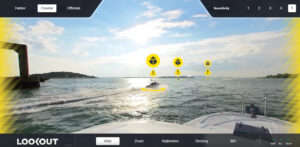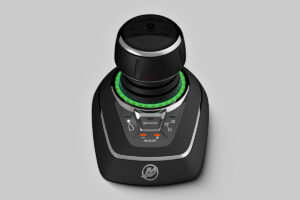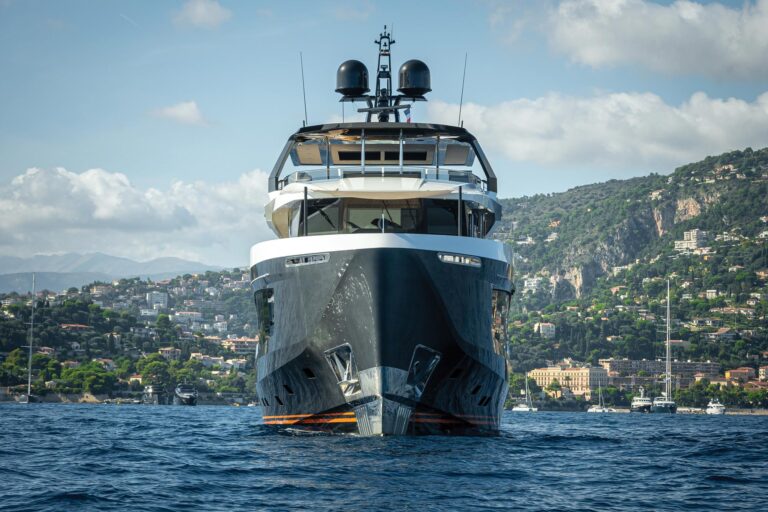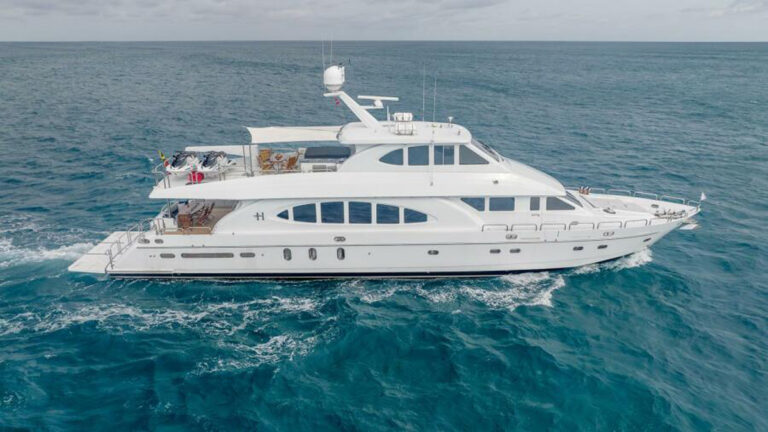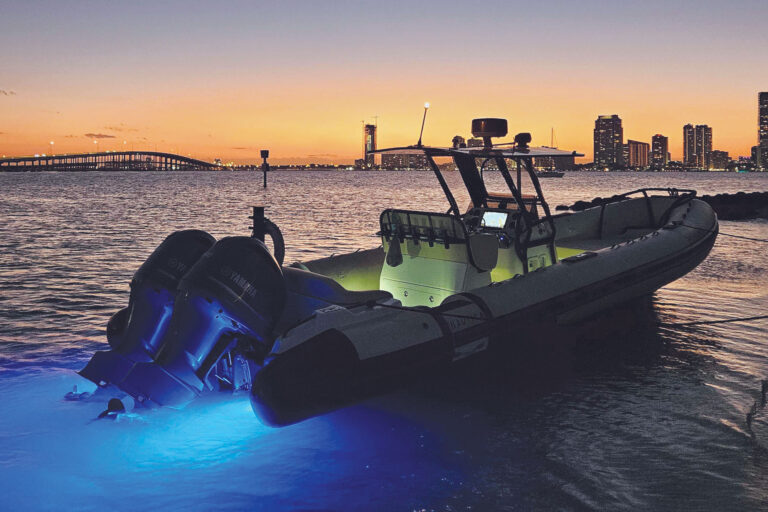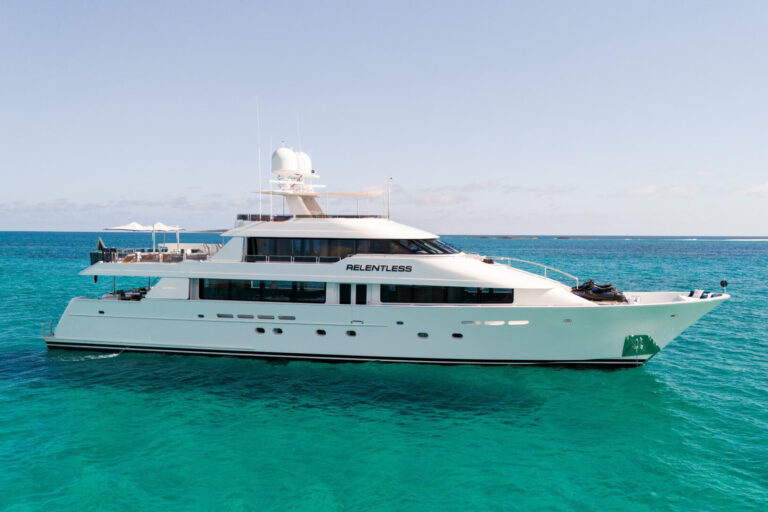Give the fish a break. Turn off your new Furuno FCV-1200 LCD Color Sounder. When it comes to fishing, the 1200 can reveal everything except whether your finny prey is male or female and whether he/she is ready to take a hook.
Furuno recognizes that a sonar’s worth is ultimately measured by the display, so it offers three options for the FCV-1200: portrait display (long axis vertical) with control panel to the right; landscape display (long axis horizontal) with controls below the screen; and owner’s choice of remote display. Using a separate display is advisable for boats with other black-box devices, such as radar and chart plotters. The separate display, black-box version, can use either control configuration.
The standard display screen is a 10.4-inch diagonal TFT color LCD with a 640-by-480-pixel resolution. Eight or 16 colors may be selected to differentiate echo information, and there are five background colors to match ambient lighting conditions. Screen brightness is sufficient for use in the shade of protected helm stations, not in sunlight. For full sunlight readability, the system can drive a number of high-brightness screens of any desired size.
The three most useful display presentations are single-frequency, dual frequency 50/50 split or single frequency 50/50 split with a zoom image of a portion of the water column. Additional configurations add a Net Sonde or an A-Scope presentation to the on-screen display. The screen layout control menu allows for virtually any display combination desired, including a four-quadrant layout.
As with any truly flexible device, ease of use is often essential to owner satisfaction. The FCV-1200’s control panel is satisfyingly intuitive. Rotary and key-operated controls are clear and unambiguous. As a test, I tried operating the system before reading the 80-page manual. Some features were not immediately obvious, but I easily enabled and used all the basic functions. The 1200’s control logic is based on familiar computer functions.
Each operating mode is clearly identified by control panel nomenclature and by on-screen menus that appear as soon as the associated control is manipulated. For example, when I turned on the MODE switch, the MODE selection window appeared and listed available operating modes (LF-ZOOM, LF, DUAL, HF, HF ZOOM, USER-1, USER-2).
The FCV-1200 makes good use of rotary and keypad controls. For example, the sensitivity or gain setting for both the low- and high-frequency transducers is adjusted using rotary knobs, while keypad controls handle the SHIFT and variable-range-marker (VRM) settings.
All the expected display configuration choices are present: bottom lock, bottom zoom, marker zoom and discriminator mode. This mode shows the acoustic return from the bottom as a straight line, making it easier to judge bottom hardness by the way the bottom trail looks on the screen.
Additional displays can be customized to match the user’s choice of information and preference for the screen’s look. The VRM control makes it easy to determine the depth of a particular feature. The MARKER control key inserts an on-screen marker while passing this information along to the vessel’s chart plotter. This creates an underwater waypoint-defined by latitude, longitude and depth-to be entered into the plotter’s memory. (Owners of recreational submarines will find this capability of great value when submerged predicted-log contests become popular.)
The screen picture is improved through the use of radar-like controls for adjusting clutter suppression and time varying gain (TVG). The controls are similar in function to radar STC controls and signal level controls that operate like the radar FTC function.
A noise-limiting feature allows the frequency driving the transducers to be shifted by plus or minus 10 percent, reducing interference from nearby sounders operating on the same frequency. The A-scope display will be particularly useful when trying to identify small targets, especially those near the bottom.
Picture-advance speed is adjustable across a range from one vertical scan line for every 16 pulse transmissions through four vertical lines for each transmitted pulse. This guarantees a good screen picture no matter the vessel’s speed.
An additional option allows control of the display’s advance speed from the vessel speed input, automatically matching the speed at which the display moves to the speed of the boat. Use of this feature will maintain a constant display return for a given size of fish or a school of fish, rather than showing varying size returns as the speed of the boat changes.
Three alarms are available: bottom alarm, activated whenever the vessel enters water of a pre-selected depth; water temperature alarm; and fish alarm or bottom-fish alarm, both triggered by echoes greater than the default setting.
Captains using integrated helm stations with multiple-screen display readouts from multiple instruments will appreciate the ability to display the FCV-1200’s data on a main screen in addition to its dedicated display.
The operator’s manual is well written and provides both extensive instruction in selecting and setting operating parameters and helpful display interpretation guidance. Maintenance and troubleshooting is well covered. The system has built-in diagnostic tests and test patterns for verification of screen function. A useful and extensive menu tree describes each control function.
If your passion for fishing demands the most comprehensive electronic/acoustic aids, you will be more than pleased with the FCV-1200’s ability to show you where the fish are and where they are going.
Then, it’s up to you.
Price: $6,595.
Furuno USA, (360) 834-9300; fax (360) 834-9400; www.furuno.com.



